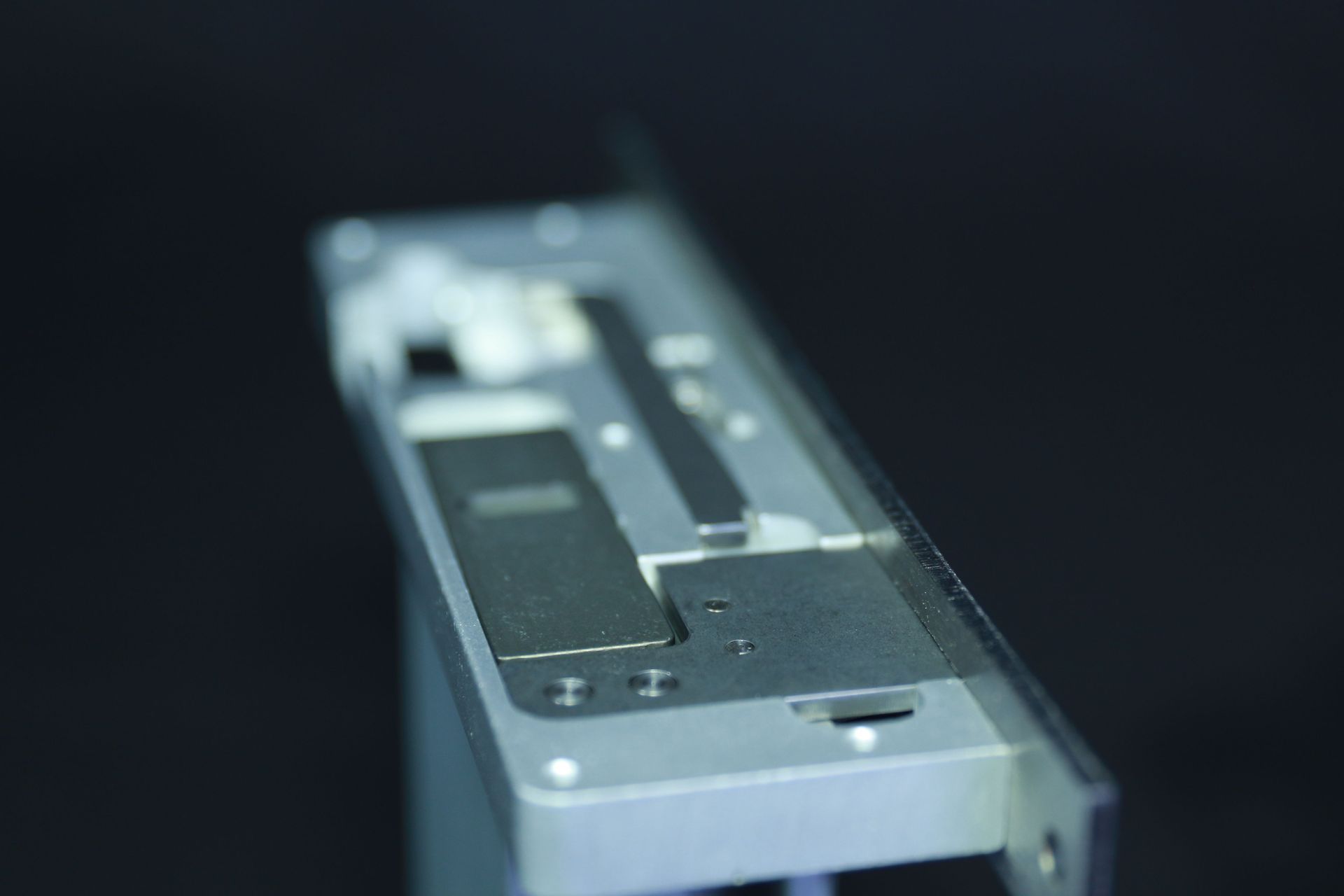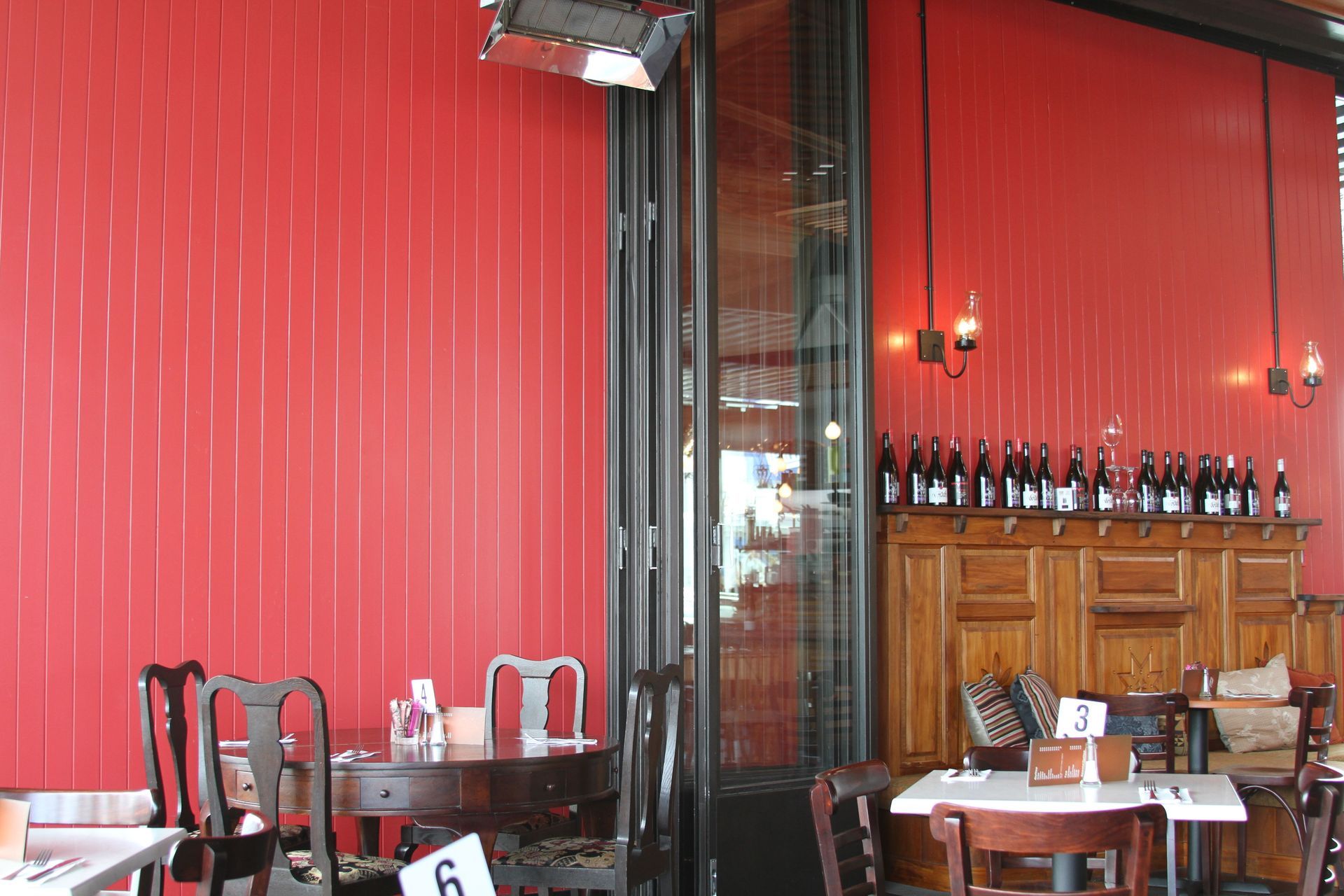Designer doors: bi-fold vs. sliding
Written by
19 November 2019
•
5 min read

There’s nothing more appealing than a vast expanse of glazing that opens up to the outdoors, drawing the natural environment inside. But what is the difference between bi-fold and sliding doors, and how do you know what the best option is?
What’s the difference between bi-fold and sliding doors?
A sliding door generally incorporates more glazing with limited framing, and is operated by sliding the door into a cavity or across an adjacent wall to open a room up completely. Sliding door tracks are generally flush with the floor (level entry) and made up of two or more sliding panels, depending on the size of the space.
In comparison, bi-fold doors are generally made up of more, smaller panels, which stack in a zig-zag fashion onto one another to open. When completely open, bi-fold doors sit stacked to one or either side of the opening.
What are the benefits of bi-fold doors?
The main benefit of bi-fold doors is their versatility, Zebratti’s Jason Harray says. “Most bi-fold doors have one or two doors at either end that operate as a normal hinged door. This means that hinged door can be operated independently for quick access in and out of the room without opening the entire space. Bi-fold doors can also be designed in various configurations depending on the size of the area and the intended functionality.”
The typical verticality of bi-fold doors in their framing can also be a drawcard in terms of creating a certain exterior aesthetic, or to punctuate horizontal cladding.
What are the benefits of sliding doors?
Sliding doors are a popular solution when simplicity is the desired aesthetic. “Due to their design, sliding doors typically allow for expansive areas of glazing free of framing and hardware, so if uninterrupted views are a priority, sliding doors can be the best option.
“Sliding doors are also easy to use, often requiring less effort than bi-fold doors, with one or two panels easily moved to open a room to the outdoors,” Jason says.
“The other benefit of sliding doors is they don’t take up any - or very limited depending on the design - floor space when open, as opposed to bi-folds that require room to stack when open.”
What are the design options for bi-fold and sliding doors?
In New Zealand, there are many options for bi-fold and sliding door hardware, however most of the solutions are designed and made overseas, Jason says. “That’s where we are different. All our products are designed and made here in New Zealand, which means they are tailored to our unique environment. Our hardware works with aluminium, timber and steel joinery.
“All our products are made with the highest quality materials and are resistant to corrosion and wear. We’re able to achieve this as we can control every aspect of production and material choice, as well as undertaking extensive testing.”
For Zebratti, that means over engineering for performance and durability, with its doors expected to have a lifetime of at least 50,000 opens and closes, which, depending on how often the door is used, can translate to anywhere from 20 to 25 years of daily use, Jason says.
Can bi-fold and sliding doors be custom designed?
While there are many standard-sized door solutions available, for many homes these don’t work as desired, Jason says. “This is especially true for architectural homes where bespoke designs are the norm and therefore standard products aren’t suitable.
“Part of our area of specialty at Zebratti is customising and creating bespoke design solutions for architectural and high-end homes with complex spaces and requirements or large areas of glazing. There is a solution for every space, with very few limitations in terms of design possibilities and functionality.”
What materials are used for modern, designer bi-fold and sliding doors in New Zealand?
Due to the harsh nature of New Zealand’s climate, one of the most important features of a bi-fold or sliding door is the materials - both of the framing and hardware. “Our coastal and often harsh environment means selecting materials of the highest quality is paramount for guaranteed performance and longevity,” Jason says. “For us, that means some of our core materials are 316 marine grade stainless steel, high grade extruded aluminium and engineered plastic, each of which is known for its superior performance and durability.”
What are the colour and finish options available for bi-fold and sliding doors?
In terms of colour and finish, the options are vast. “Some of the most popular finishes are a bronze finish on stainless steel, and electroplated finishes in satin chrome, brushed nickel, black and antiqued bronze. “These are statement finishes that can create a dramatic appeal for both the exterior facade and the internal design scheme.”
Zebratti also provides an extensive range of colour options in its power-coated finishes.
Find out more about Zebratti architectural designer hardware and how Zebratti works closely with architects to design custom and bespoke solutions for architectural builds.


